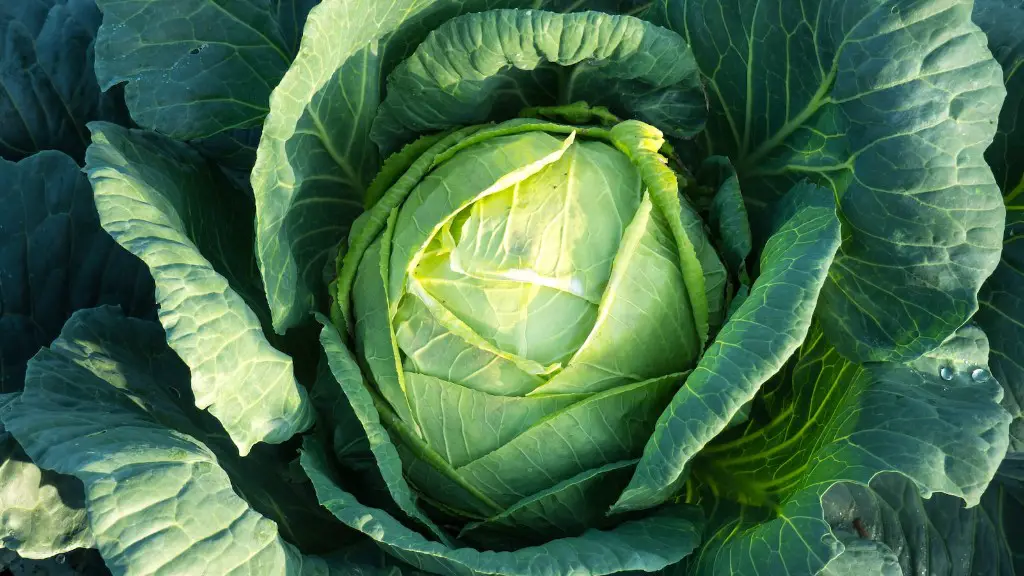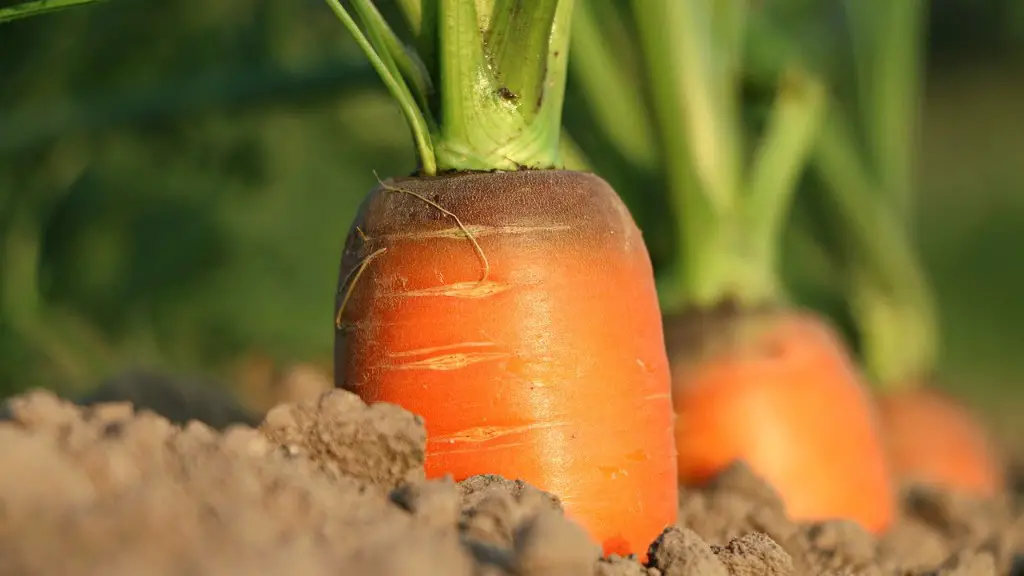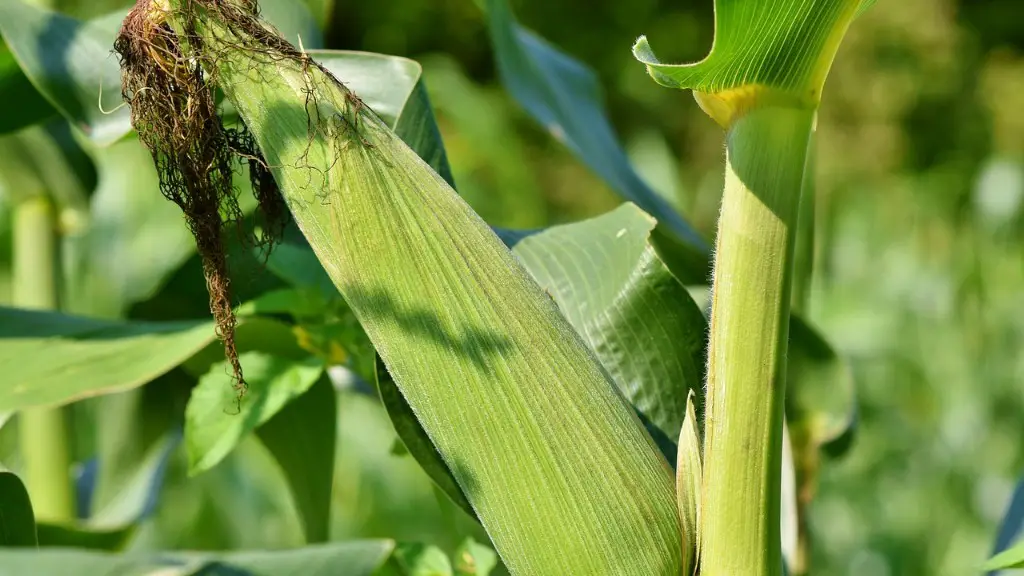Agricultural zonation is an important concept within the field of agronomy, and is recognized as the division of an area according to the agricultural activities undertaken there. It may also be referred to as site division or topography division, depending on the context. Zonation can be applied to a variety of spatial scales, from fields to entire continents. Vertical zonation is the division of an area into different vertical zones, taking into account the topography of the area, including various landforms and height above sea level. This form of zonation has significant implications for agriculture, as the vertical land division brings different environmental characteristics to various parts of the land and can have significant impacts on the crops that can be grown.
Vertical zonation can strongly affect the types of crops that can be grown in any given area due to the different environmental conditions located within each zone. Higher altitudes tend to be colder and can wrap the crops in cooler air with longer periods of freezing temperatures. In contrast, lower altitudes tend to be warmer and experience shorter freezing periods, which should favor the planting of warm weather crops. Areas with higher elevations are often less arid and have more water availability, while lower elevations are typically more drought-prone. These are just some of the environmental conditions present within each vertical zone of land, which can affect the types of crops that can be grown.
In addition, vertical zonation can also dictate the planting process, given that it takes into account variations in soil types and landforms. Areas at higher elevations have lower temperatures, which can affect the degree to which the soil warms up during spring. The timing of the planting process for any given crop can be affected by this and should always be taken into consideration. Changes in soil types can also have implications for the drainage, nutrient levels and fertility of the soil, which can affect crop growth. Understanding the vertical differences in an area can help farmers adjust the planting process accordingly.
Vertical zonation can also be used to assess risk factors for agricultural production. Areas with higher elevations tend to have lower temperatures and more rainfall, while lower elevations typically have warmer temperatures and less rainfall. These climate differences can make certain areas more favorable than others when it comes to producing certain crops, as lower temperatures and higher rainfall levels can reduce the risk of certain crop diseases. It can also be used to identify areas at risk of water scarcity or drought, since higher elevations tend to have more water available for agriculture.
Finally, vertical zonation can be used to plan for different agricultural management activities. Areas at higher elevations have more water available and can be used for irrigation, while lower elevations tend to be drier and more suitable for crops that don’t require large amounts of water. Different soil types in each zone can also be taken into account, as they can influence the types of fertilizer and conservation activities needed to sustain crop growth. Understanding vertical zonation can help farmers and agronomists plan for different activities that are best suited to each area, based on their topography and landforms.
Impacts Of Vertical Zonation On Agroforestry
Agroforestry is an agricultural practice that combines trees and crops, allowing farmers to produce a variety of products from the same piece of land. This practice relies on the natural processes of the environment and on the characteristics of the land in order to succeed, and can be affected by vertical zonation in a number of ways. Areas at higher elevations tend to provide more water to the land, which can be beneficial for tree growth and help to maintain the health and productivity of the trees. Furthermore, soil fertility tends to be higher at higher elevations, which can help ensure higher crop yields as well. On the other hand, lower elevations typically experience greater temperatures, making it better suited for crops that require more warmth.
Agroforestry systems are often used to produce multiple products of different kinds. Understanding vertical zonation can help farmers decide which parts of the land are best suited for which crops or products, allowing them to maximize the productivity and profitability of the land. For example, tree crops such as coffee and cocoa can be grown at higher elevations, while warm-weather crops such as corn or cotton are better suited to lower elevations. Additionally, areas with different soil types should be taken into consideration when it comes to choosing which crops will best suit the environment.
The use of vertical zonation can also help determine the control and management techniques that should be employed to maximize the relative productivity of the land. Higher elevations are typically cooler, providing different environmental characteristics than the lower elevations. This means that different management techniques should be used, such as irrigation and mulching, in order to ensure the best possible conditions for tree growth. On the other hand, lower elevations are typically warmer, making it important to employ control techniques such as shading and pest control in order to maintain healthy crops.
Finally, the use of vertical zonation can also help farmers to preserve and sustain the land’s natural processes and characteristics. Areas of higher elevations tend to be cooler and have more water available, meaning that they are more suitable for trees and perennial crops. On the other hand, lower elevations are usually warmer and may be more suitable for annual crops. Whenever possible, it is important for farmers to take these environmental factors into account and plan for different land management activities based on the different vertical zones of the land.
Impact Of Vertical Zonation On Animal Husbandry
Animal husbandry is a practice that involves the rearing and breeding of animals for food, fiber, or other products. This practice is heavily dependent on the physical environment of the area, and it can be drastically affected by vertical zonation. Areas of higher elevations tend to provide a cooler climate, as well as higher water availability and better soil fertility. These conditions are beneficial for certain animals, such as cows and sheep, which are well-suited to the cooler temperatures, abundant food, and lush vegetation that these areas typically provide.
In contrast, areas of lower elevation tend to be warmer and drier, making them more suitable for animals that are adapted to these conditions. This includes animals such as horses and goats, which can better tolerate the increased temperatures and drier conditions of lower elevation areas. Understanding vertical zonation can help farmers decide which animals to keep in which areas, and which management practices to use in order to maximize their livestock production.
Vertical zonation can also affect the food resources that are available to the animals. Areas at higher elevations typically have more water availability, as well as higher soil fertility, which can provide a better source of nutrition for the animals. This can be especially beneficial for livestock, as water and food sources are necessary for optimal health and productivity. Lower elevations, on the other hand, typically have lower water availability and poorer soil fertility, and may require supplemental feeding in order to maintain animal health and productivity.
Finally, vertical zonation can also be used to identify areas that are more vulnerable to different environmental risks. Areas at higher elevations tend to be cooler and have more water available, which can help to reduce the risk of heat stress and dehydration. In contrast, lower elevations are typically warmer and drier, making them more prone to drought and water scarcity. Understanding the vertical differences in an area can help farmers plan for different management techniques to reduce the risk of environmental stress.
Impact Of Vertical Zonation On Organic Agriculture
Organic agriculture is a type of agricultural system that focuses on producing food without the use of chemical inputs, such as pesticides and synthetic fertilizers. This type of farming is heavily reliant on the environment, and it can be affected by vertical zonation in a number of ways. Areas at higher elevations tend to be cooler, providing different environmental characteristics than the lower elevations. This can be beneficial for organic crops, as cooler temperatures can reduce the risk of pest infestations, which are better managed through a combination of cultural, biological, and mechanical practices.
In addition, areas at higher elevations tend to have better soil fertility and more water availability. These environmental factors are essential for optimal crop growth, and can be especially beneficial for organic agriculture. For example, areas of increased water availability can help reduce the need for supplemental irrigation, making it easier for farmers to manage their crops without the use of synthetic inputs. Furthermore, areas of higher soil fertility can provide better nutrition for crops, helping them to reach their full potential.
Vertical zonation can also be used to identify areas that are more suitable for organic production. Areas of higher elevations tend to be cooler and have more water available, making them more suitable for certain plants and crops. In contrast, lower elevations tend to be warmer and drier, making them better suited for warm-weather crops such as corn, cotton, and soybeans. Understanding vertical zonation and its associated environmental conditions can help farmers plan for different crop rotations and soil conservation activities.
Finally, vertical zonation can be used to assess the different environmental risks associated with organic agriculture. Areas at higher elevations tend to have cooler temperatures, which can be beneficial for reducing the risk of pests and diseases. In contrast, lower elevations are usually warmer and drier, making them more prone to drought and water scarcity. Understanding the vertical differences in an area can help farmers plan for different management techniques to reduce the risk of environmental stress.
Impact Of Vertical Zonation On Aquaculture
Aquaculture is the farming of aquatic organisms, such as fish, mollusks, and crustaceans, for food and other products. This type of farming relies heavily on the environment, and vertical zonation can have significant impacts on the success of aquaculture systems. Areas of higher elevations tend to provide cooler temperatures, which can be beneficial for certain fish species. This includes native species, such as trout, which do better in cooler and less turbulent waters. On the other hand, areas at lower elevations tend to be warmer and more turbulent, making them better suited for species such as catfish.
Vertical zonation can also affect the water sources available to aquaculture systems. Areas at higher elevations tend to have more water available, making them better suited for fish and shellfish farming. These areas can provide water for irrigation, and can also be used to help maintain the water temperature within the aquaculture system. On the other hand, lower elevations tend to be drier, making supplemental feeding and water sources essential for successful aquaculture.
In addition, vertical zonation can also be used to assess the different environmental risks associated with aquaculture. Areas of higher elevations tend to have cooler temperatures, making them more suitable for certain fish species. This can be beneficial for reducing the risk of heat stress and dehydration. On the other hand, lower elevations are usually warmer and drier, making them more prone to drought and water scarcity. Understanding the different vertical zones of the land can help aquaculture farmers plan for different management activities in order to reduce the risk of environmental stress.
Finally, the use of vertical zonation can also help farmers to identify areas that are better suited for different aquaculture activities. Areas at higher elevations tend to have cooler temperatures, more water availability, and better soil fertility, making them more suitable for the growth of fish and shellfish. On the other hand, lower elevations are typically warmer and drier, making them more suitable for the cultivation of marine plants, such as seaweed.





